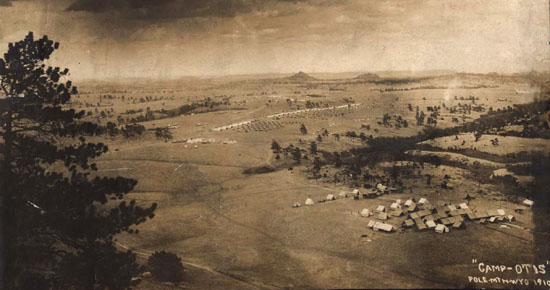
Maneuvers, Regular Army, Camp Otis, Fort D.A. Russell Target and Maneuver Reserve, Pole Mountain, Wyoming, July 1910.
In the foreground is the Headquarters Camp. In the middle of the photo is the encampment for
the 12th Cavalry and in the distance, barely visible, is the encampment for the 8th Cavalry. The Target and
Maneuver Reserve was originally created in 1879 as a wood and water reserve for Fort D.A. Russell. The reserve
was located about about 22 miles east of Laramie at Pole Mountain near the headwaters of the North Branch of
Crow Creek.
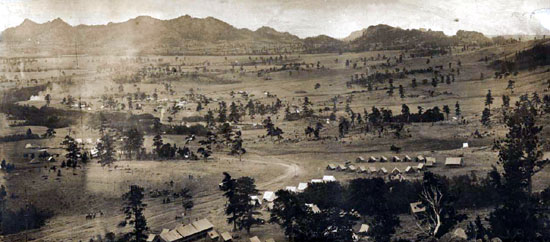
11th Infantry Encampment, Camp Otis, Fort D.A. Russell Target and Maneuver Reserve, Pole Mountain, Wyoming, July 1910.
The tents in the foreground housed non-commissioned officers. Participating in the maneuvers in addition to the 8th and 12th Cavalry and the 11th Infantry were the 15th
Infantry and the 18th Infantry. Camp Otis was named after Major General Elwell S. Otis who led
American Land forces in the Phillipines during the Spanish-American War. Many of the forces in the
Phillipines came from Fort D.A. Russell. Additionally, as previously noted, units of the Wyoming
National Guard led the assualt on the City of Manila.
The Wyoming National Guard was organized in 1891 with its first encampment near Laramie at a camp named after
Acting Governor Amos W. Barber. The legislature had, however,
overlooked appropriating money for the encampment. Thus, transportation was provided without
charge by the Union Pacific, other expenses were met by under the auspices of the Laramie Board of Trade and by
the officers and Acting Governor Barber's staff. surplus tents and other equipment were provided by the
Seventheenth Infantry. The First Regiment of the National Guard consisted of seven companies: Company A, Laramie City; Company
B, Cheyenne; Company C, Buffalo; Company D, Rock Springs; Company E, Green River; Company F, Douglas; and Company G, Sheridan.
Most of the companies had only just been formed. Indeed, many of the men in Company F had
never worn their uniforms until they arrived at the encampment.
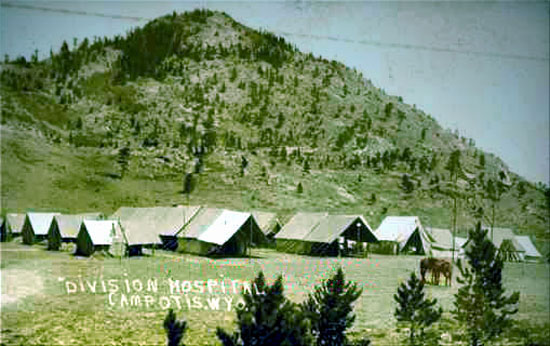
Hospital Tents, Camp Otis, approx. 1910.
Ultimately, the Army acquired in excess of 62,00 acres for the Reserve. It was extensively used prior to the World
War I. Its use declined following the war and in 1925 the bulk of the Reserve was transferred to the
Medicine Bow National Forest with the army retaining approximately 3,300 acres.
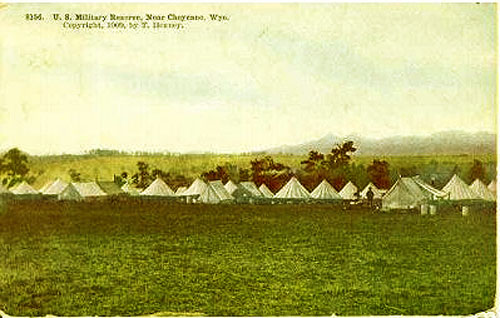
Camp Otis, 1909.
The military retained the rightto utilize the entire area. Use, however, prior to World war II, however, was limited and
the area was primarily devoted, as it is today, primarily for recreation.
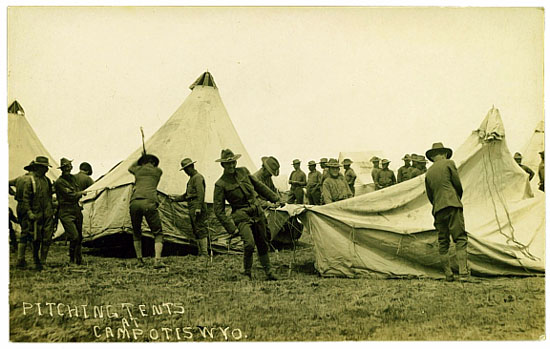
Setting up tents, Camp Otis, undated.
In 1936, the area was used for the
filming of the cavalry sequences in Cecil B. DeMille's The Plainsman. With the change of name of
Fort D.A. Russell, the area became known as the Fort Francis E. Warren Target and Naneuver Range. In October, 1936,
President Franklin Roosevelt visited the range. He noted in a speech at Fort Warren that he
had one concern, "I was telling the General when we were out a little west of here and saw
the rifle ranges, that my only worry was that these boys who learned to shoot in this clear atmosphere would not be able
to see the targets when they get back to the effete east."
During world War II, the area again was
used for military training. In 1961, all military use was terminated and all administration was placed with
National Forest Administration.
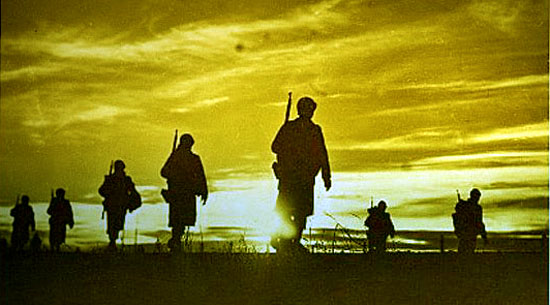
Training, Pole Mountain, 1943.
Next Page, Stage Lines.
|